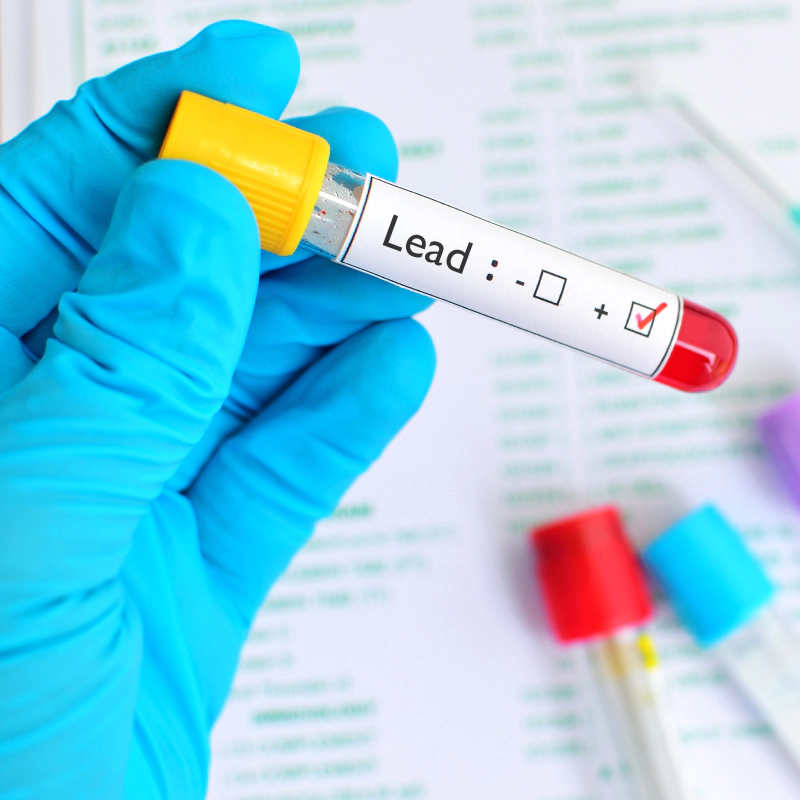Experienced Inspection Service at Your Fingertips
Lead
Other lead hazards also exist, including:
- Old painted toys and furniture
- Food and liquids stored in lead crystal or lead-glazed pottery or porcelain
- Hobbies that use lead (e.g., making pottery or stained glass; refinishing furniture)
- Occupations where you work with lead, which could be brought home on hands or clothes (e.g., plumbers, pipefitters, printers, auto mechanics, body shop workers, home remodelers, construction workers)
- Folk remedies that contain lead (e.g., “Greta” and “azarcon” are used to treat an upset stomach)
(It should be noted that there is no lead in a pencil. The “lead” in a pencil is actually made of graphite.)
How to Test for Lead
Testing for lead in household water is a relatively simple and inexpensive procedure when done by a professional. A small amount of water is taken from a faucet left unused overnight to provide a “first draw” sample, representative of the first glass of water one may drink in the morning. The sample is then sent to a licensed laboratory for analysis.
There are two basic ways to test for lead paint. Professional testing companies use X-ray fluorescence (XRF) — this method uses a portable detector that X-rays the painted surfaces in your home to measure the amount of lead in each layer of paint. This testing is done in the home and causes little if any, paint disturbance.
Laboratory testing of paint samples–this method uses paint samples from the different surfaces in your home. These samples are usually about two square inches. Samples are not tested in the home, rather they are sent to a laboratory for analysis. This method leaves bare spots on the surfaces tested.
Lead swabs are NOT a reliable method of lead paint testing.
Remedies for Lead Problems
Since it’s generally not feasible or cost-effective to replace all of the plumbing in a home, the most common treatment for lead in household water is reverse-osmosis filtration. This consists of a filter placed at the point of use, such as the kitchen faucet that would most commonly be used for drinking or cooking. Reverse osmosis filters are neither simple nor inexpensive, usually costing $300-$400 each or more and requiring periodic maintenance.
Never attempt to remove lead-based paint yourself. Poisoning can occur as a result of scraping and sanding lead-based paint. Take the following steps to make renovations or lead paint removal in your home:
- Contact your local or state health department to have your home tested for lead paint. Some will test for free. (Home test kits are not recommended because they often cannot detect small amounts of lead.)
- Hire a professional to correct or remove lead-based paint from your home. It is essential to have someone who knows how to safely work with lead paints using appropriate equipment and cleanup.
- Have all occupants leave the building until all work is done and cleaned up, especially children and pregnant women.
There are also special paints available and window/door frame liners that can help make surfaces with lead paint safer to live with. Consult with a paint specialist or lead remediation company for information.
GET IN TOUCH
If you’re ready to get fantastic service, then call us today or fill out the form.




